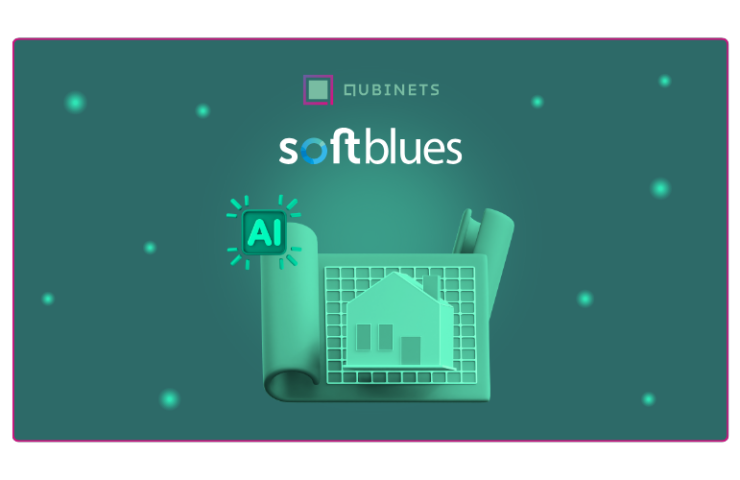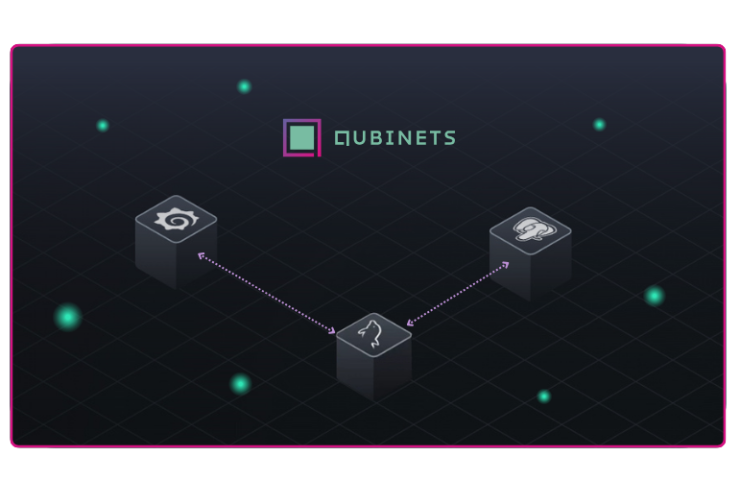Building a cloud agnostic infrastructure is a strategic approach ensuring that your applications and services can operate seamlessly across various cloud environments. This means your cloud computing solutions are not tied to a single cloud service provider. A major advantage of this strategy is the flexibility it affords your business, allowing for easier cloud migration and avoiding vendor lock-in. As you design your cloud strategy, it’s essential to consider how cloud agnosticism can future-proof your investments and provide operational resilience.
Developing a cloud agnostic architecture involves adopting tools and practices compatible with multiple cloud providers. By doing so, you can leverage the best features and pricing models from different clouds to optimize cost and performance. As your company grows and technology evolves, this adaptability becomes increasingly beneficial. You’ll find that keeping your options open can lead to significant long-term savings and more agility in how you deploy your digital assets.
A cloud agnostic approach requires a thoughtful consideration of the ways in which your infrastructure interacts with different cloud services. It’s critical to embrace open standards and technologies that ensure interoperability between clouds. Additionally, understanding the intricacies of each provider’s offerings is key to a successful cloud strategy that meets the unique needs of your company. Making informed decisions now will facilitate smoother transitions and expansions in the cloud landscape of tomorrow.
The Need for Cloud Agnostic Infrastructure
In today’s competitive landscape, cloud-agnostic infrastructure is becoming a key strategy for businesses seeking to optimize their digital infrastructure. By adopting a cloud-agnostic approach, you unlock the potential for cloud portability and cloud interoperability, allowing for a seamless transition between different cloud services and cloud platforms.
Opting for a single cloud provider could introduce the risk of vendor lock-in, potentially leading to higher operational costs and difficulty transitioning to other solutions that might better serve your strategic needs. The flexibility to transfer data without prohibitive egress fees can be critical for adapting to market changes and maintaining operational efficiency.
Here’s how cloud agnosticism can positively impact your business:
- Reduced Operational Risk: Distributing your applications across multiple clouds can protect your business from outages and reduce downtime.
- Strategic Flexibility: You gain the ability to switch services as needed, taking advantage of best-in-market offerings, without the constraints imposed by any single cloud provider.
- Cost Optimization: Cloud agnosticism opens the door for you to negotiate better pricing and avoid unexpected costs associated with data transfer and storage policies.
With recent announcements from major cloud providers, the industry recognises the value of cloud agnosticism. They are taking steps—albeit limited—toward facilitating a more open cloud ecosystem. This acknowledges the necessity for policies that support the various needs of modern businesses, which may include maintaining multiple cloud relationships or total migration away from a single service provider.
To stay competitive and agile, prioritize building a cloud infrastructure that supports scalability without tethering you to one vendor. The transition to a cloud-agnostic architecture empowers you to maintain control over your digital assets and the freedom to evolve your technology stack as your business requires.

Building a Cloud-Agnostic Infrastructure
In building a cloud-agnostic infrastructure, focus on leveraging technologies and practices that ensure portability and flexibility across multiple cloud environments. Embracing containerization, infrastructure as code, and cloud orchestration tools are key to achieving a robust, cloud-independent architecture.
Containerization and Kubernetes
Containerization is the cornerstone of a cloud-agnostic infrastructure, encapsulating applications in containers to make them portable across different cloud environments. You must isolate your applications from the underlying infrastructure to achieve true agility. Kubernetes has become synonymous with container orchestration. With Kubernetes, you can manage and scale your containers efficiently, regardless of the cloud provider.
Infrastructure as Code
Infrastructure as Code (IaC) is a practice where infrastructure is provisioned and managed using code and software development techniques. This method allows you to create a blueprint that can be versioned, shared, and reused to ensure consistency across deployments. Implementing IaC is a best practice for cloud-agnostic systems, as it supports the creation of identical environments in different clouds.
Cloud Orchestration Tools
Cloud orchestration tools are essential in automating and managing resources across multiple cloud platforms. These tools enable you to design and deploy cloud services with interdependencies effectively. Leveraging cloud orchestration contributes to cloud automation and the delivery of cloud-native applications. Tools like Terraform and Ansible allow you to describe infrastructure in a high-level configuration syntax, providing an additional abstraction layer that enhances your cloud-agnostic posture.
Migrating Between Clouds: A Step-by-Step Approach
Properly migrating between cloud environments requires a structured approach to avoid common pitfalls. Your goal should be a seamless transition that aligns with your multi-cloud strategy, integrating public and private clouds for an efficient hybrid cloud system.
Integrating Hybrid Cloud Environments
Planning and Assessment: Start by conducting a comprehensive review of your existing infrastructure to identify which applications and workloads will move to the hybrid cloud. Assess their compatibility with the cloud integration layers and ascertain whether they belong in the public or private segment of your cloud strategy. Ensure you understand the dependencies and how each application interacts within a multi-cloud ecosystem.
- List Current Assets: You should catalog all IT assets and services to be migrated.
- Define Requirements: Clearly articulate your business, technical, and security needs.
- Choose the Right Platforms: Determine the best public and private cloud platforms based on your requirements.
Execution: Develop a detailed migration plan that outlines the steps for transferring your assets. This plan must account for minimizing downtime and ensuring data integrity during the transfer.
- Prepare the Cloud Environment: Set up your target public and private clouds to receive the migrating assets.
- Migrate Data and Applications: Use robust tools to transfer your assets securely and efficiently.
- Monitor the Migration: Keep track of the migration progress to spot and resolve any issues swiftly.
Validation and Optimization: After the migration, it’s crucial to verify that all systems operate optimally within the new hybrid environment. Conduct thorough testing to confirm that the integration meets the established requirements, then tweak and optimize resources to get the best performance and cost efficiency.
- Test for Compatibility and Performance: Run a series of tests to ensure everything works as expected.
- Optimize Resources: Fine-tune resource allocation and usage to optimize costs and performance.
- Establish Continuous Improvement: Implement monitoring tools for ongoing optimization and ensure compliance with your multi-cloud strategy.
By maintaining a neutral and methodical approach throughout your migration, you should be able to minimize disruptions and lay a strong foundation for a versatile cloud infrastructure.
Security and Compliance in a Cloud Agnostic Environment
When you transition to a cloud agnostic infrastructure, maintaining robust security and ensuring compliance is critical. Your data must be protected, and your operations need to abide by regulatory standards regardless of the cloud platforms you utilize.
Maintaining Cloud Security
Cloud Data Management is a fundamental aspect of cloud security. In a cloud agnostic environment, you must enforce strict security protocols across multiple clouds, securing your data uniformly. Consider implementing a centralized security management system to monitor and protect your data wherever it is. This might include using encryption, managing identities and access, and employing consistent security posture management strategies. For more in-depth insights, you could explore how VMware supports cloud security in a cloud agnostic framework.
Ensuring Cloud Compliance and Governance
Compliance and governance in a cloud agnostic infrastructure require a comprehensive understanding of the regulations that govern your industry and how they apply across different cloud services. It is essential to develop a cloud governance framework that includes policies and controls that are both platform-independent and scalable. This framework should address data privacy laws, financial regulations, and industry standards, adapting them to the specifics of each cloud provider. Effective governance ensures that your operations are Cloud Compliant regardless of the underlying infrastructure. Tools like those provided by VMware’s CloudHealth play a pivotal role by simplifying the creation and management of such policies.
Optimization and Continuous Improvement
As you build your cloud-agnostic infrastructure, optimising and continuous improvement is critical for enhancing performance and managing costs effectively. Stay attuned to the dynamic cloud environment through rigorous monitoring and thoughtful cost management strategies.
Cloud Performance and Monitoring
To ensure robust cloud performance, you must implement comprehensive monitoring mechanisms. In a cloud-agnostic setup, you can leverage tools that provide visibility across different platforms, enabling you to track and analyze metrics efficiently. Emphasize on setting up alerts for performance deviations and establish baselines to compare real-time data against historical performance. Remember that measuring your cloud’s performance should directly align with your business objectives to achieve a tangible Cloud ROI.
- Key metrics: Focus on latency, error rates, and throughput.
- Best practices: Regularly review performance data and adapt your infrastructure to maintain optimal operation.
Cost Management and Optimization
Effective cost management hinges on continuous identification and implementation of cost-saving measures. This process begins with a clear mapping of cloud expenses to their business value. Adopt cloud cost optimization strategies that involve selecting the right size and type of resources, identifying underused resources for downsizing, and leveraging commitment-based discounts when appropriate. The goal is to strike a balance between expenditure and performance to realize Cloud ROI.
- Budgeting techniques: Use bold for tools and platforms, and set up thresholds to control expenditure.
- Cost optimization practices: Automate resource scaling and consider reserved instances for predictable workloads.
By integrating robust performance monitoring with strategic cost management, you can ensure your cloud infrastructure delivers value consistently, adhering to Cloud Best Practices for sustainability and growth.

Simplifying the Cloud infrastructure building with Qubinets
When you approach building an agnostic cloud infrastructure, the complexity may seem daunting. Qubinets offers a streamlined solution to construct and manage your cloud environment effectively.
By employing Qubinets, you simplify the deployment process, allowing for more efficient resource allocation and management.
Key Advantages of Qubinets:
- Ease of Use: Qubinets’ intuitive interface dramatically decreases the learning curve for setting up cloud infrastructure.
- Automation: It automates many repetitive tasks involved in the cloud setup, such as provisioning resources and configuring networks.
Implementation Steps with Qubinets:
- Select Resources: Begin by choosing the types and quantities of resources you need, such as computational power, storage, and networking capabilities.
- Define Configuration: Use Qubinets to define your system’s configuration. Specify your requirements regarding privacy, connectivity, and other infrastructure parameters.
- Deploy with a Click: With configurations set, Qubinets deploys your resources with a simple click. It provisions services across multiple cloud providers if needed, ensuring high availability and redundancy.
Monitoring and Scaling:
Qubinets provides real-time monitoring tools, which give you immediate insights into your systems’ performance. When demand fluctuates, Qubinets facilitates easy scaling. It permits you to increase or decrease resources to match your current requirements without overhauling your entire infrastructure.
Security and Compliance:
Security is not an afterthought with Qubinets. Through the platform, you can apply robust security measures and ensure compliance with industry standards. Implement identity management, encryption, and network security effortlessly.
In summary, Qubinets simplifies the construction of cloud infrastructure by integrating essential elements of setup, management, and scaling into a unified platform. This ensures you build a robust, secure, and scalable cloud environment with considerable ease.





